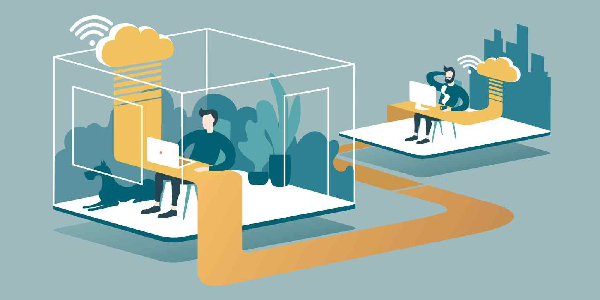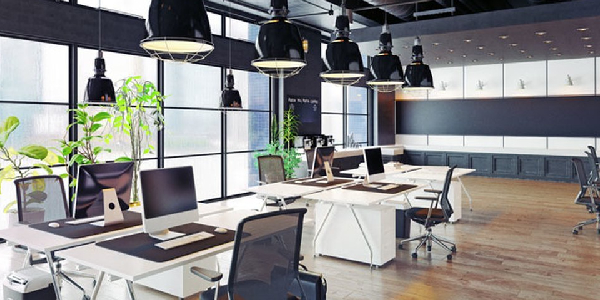Hybrid Work From Home Model
Hybrid solutions seek the optimal combination of productive work, reduced stress and reduced working hours. A hybrid workplace is what it is, why it is important and how it can be implemented in your company.
In the early days of the COVID 19 pandemic, this was a strange and precarious world of work. But it was also a success for some.
The future of work is here and now.
Millions of people around the world gave up their daily commute to work in favour of a quick walk to the kitchen. For the most part, it was a fruitful transition. Many companies went from asking whether a remote working environment was a viable option to agreeing that it was the only viable option for natural wood office furniture
Lawyers, financial planners, doctors and therapists are just a few examples of professions that have adapted to working remotely. Workers have succeeded during the pandemic because they are no longer constrained by the physical constraints of their jobs. This contradicts the widespread notion that working from home reduces efficiency.
Workers, on the other hand, do not beg to return home, at least not in the same capacity. Our lives have changed dramatically since the pandemic broke out. Restrictions in some areas began to ease in early summer and the focus shifted to getting people back to work.
Employers were at a crossroads, trying to placate workers while reconciling business and productivity goals. As a result, a new workplace model, the hybrid workplace, was created. The hybrid workplace is a business model that combines remote and office work. A hybrid working environment combines office and remote work with a hybrid approach to learning, similar to school.
What is a Hybrid workplace?
Hybrid workplaces can take different forms depending on the organisation; some hybrid workplaces consist of skeletal staff on site, while others can come and go at will for whatever reason. Job hybrids allow greater versatility and autonomy in terms of where and how you work. By dividing jobs into fixed hours in the office, job hybrids enable workers to integrate work into their lives. They are an ideal scenario for many employees and employers because they combine autonomy and sociability with structure.
It is the same staff that is expected to be on site, or it can be a combination of staff working different days and hours. Staff are also expected to attend meetings in person on specific days.
Hybrid solutions seek the optimal combination of productive work, reduced stress and reduced working time, e.g.
According to a survey 75 percent of employees who move to or remain in the COVID-19 areas are as busy with their individual tasks as they were before the pandemic. Half of those surveyed believe that they would be least successful in joint projects if they did not have a conference room. That is the wish of almost half of the employees.
Mixed jobs can help workers overcome the fear of returning to the public workplace and the problems with public transport described above. Mixed workplaces prioritise employees and promote a healthy work-life balance. Critical care for immuno compromised and even immuno compromised people.
Organizations that offer a combination of personal and remote workplaces have access to a larger pool of workers because they are no longer limited to recruiting in a specific geographical area. Hybrid jobs are also cheaper for everyone. Because of their dependence on large offices, companies can save thousands of dollars in real estate and office management costs.
When workers work from home when they are sick, a hybrid workplace can help reduce the spread of infectious viruses. It can also help build a crisis-resistant culture and prepare an organization for a possible lockout. Many employees can work from home, and organizations can relocate to a more remote environment if desired. Critics have pointed out that the hybrid workplace paradigm is flawed.
Front-line workers, such as those employed in hospitals, camps, and law enforcement agencies, may not be able to work in a hybrid environment. Those who do not have access to high-speed Internet may have to designate a workplace at home as a distraction-free environment. Consider situations where employees cannot participate in face-to-face meetings. Workers who are physically unable to work in the workplace may be at a disadvantage in hybrid environments.
When they step in front of the camera, they may miss both sides of the conversation. Female employees are particularly disadvantaged, as the care they need for young children could prevent them from returning to work. Another concern is that workers who are more visible in the workplace produce more. Remote workers may feel overlooked when looking for opportunities, because they are less visible and may have to return to work later.
In other words, physical offices have more power than remote offices. The challenge is that teamwork and communication are more important than ever. This is particularly difficult when the incumbent leadership is present.
If not properly implemented, hybrid jobs can create a gap between those who work in offices and those who do not. When two opposing positions have to be negotiated, there is a greater risk that a side will feel excluded from important discussions. Such circumstances underscore the importance of thinking carefully about hybrid workplace strategies.
What do employees want?
In a hybrid workplace, the new challenge is how to communicate and engage with workers who are not there. The good news is that this challenge can be solved with an intranet application. Welcome to your home intranet, where everyone is always there.
Modern intranets go beyond the automation of a wide variety of business processes, including those that used to include paper forms. Even before COVID-19, organizations around the world were using the intranet to improve knowledge management, teamwork, innovation, efficiency and resilience.
Say hello (again) to your intranet
Intranets are crucial to the success of hybrid workplaces, as they act as a centralized source of change and pandemic information. Intranets make it easier for communicators to decide which employees are reading the most important announcements.
Include your employees in the process
Physical return to work must comply with health and safety rules. Involve the employees in the process. Hybrid workplace plans are more likely to be successful if employees feel involved in the journey and the associated discussions. When employees are interviewed, they are asked how they feel about returning to work and how they can use and achieve this feeling.
Make it safe & Establish an even playing field
Local health and safety organisations offer advice on topics such as the maximum number of permitted employees, cleaning and hygiene procedures at the workplace, employee communication, social dissociation policies and risk assessment. Note that not all workers will be able to return to work in a traditional environment. These include people who care for young children, elderly parents, people who rely on public transport, people who suffer from anxiety or who cannot return because a vaccine has been developed. Therefore, it is important to ensure that distant employees have the same promotion opportunities as those who work in an office.
Communicate your plan
Virtual social hours, videos, town hall meetings and the continued use of online networking resources can help to keep employees connected to the company’s principles and goals. Maintaining an evolving and coherent organizational culture in a mixed workplace is a challenge and requires the management of two different employee experiences. To achieve the best results, hybrid workplace initiatives must ensure that they are well communicated to all stakeholders. It amounts to the same effort for home and office workers. Don’t forget your ancestors.
Don’t neglect your culture
Hybrid jobs tend to be a short-term solution, but they can also be a long-term solution for the future of work. To be feasible, hybrid workplace plans should be carefully implemented and treated as novel experiments. They have to juggle employment, security, communication and mental health. Employees must understand their duties and know what is expected of them from their superiors.
Eventually, the pandemic will be over. If that happens, the workplace will be a happier, healthier, and more prosperous place than it is today.






